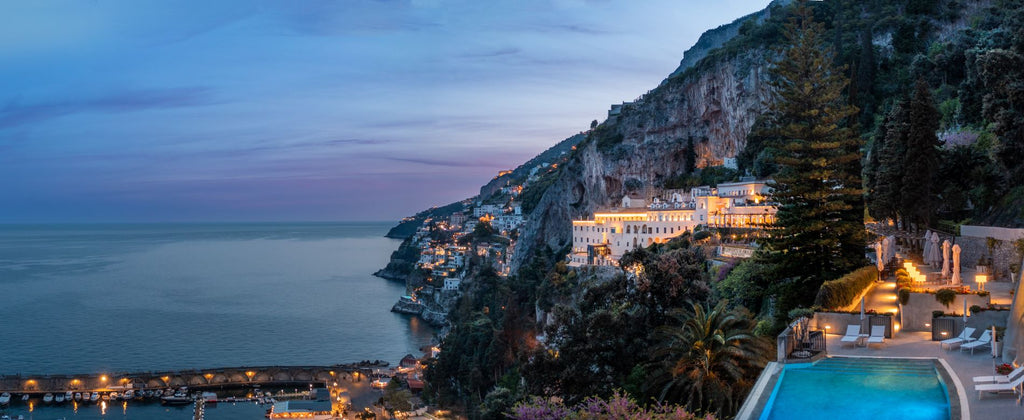If there’s one Italian food known the world round, it’s pasta.
To outsiders, pasta can seem like a universally Italian delicacy, served up in different shapes but essentially all one food. But the history of pasta is long and twisting—like a piece of fusilli lunghi—with innovations and experimentations taking place over the centuries in different parts of the country. From the couldn’t-be-simpler dough of flour and water that the Romans called laganum, pasta has evolved to a truly magnificent family of unique dishes, united in their deliciousness. Just as the different regions of Italy have their own recipes, techniques, and beloved ingredients, some pasta shapes are inextricably linked to their birthplace.
From north to south, follow along on our tour of some of the most iconic regional pasta shapes across Italy.
Veneto: Potato gnocchi
Northern Italy does not have the rich pasta tradition that many regions to the south do—the cool, mountainous lands bordering Austria, Switzerland, and France have a unique culinary sensibility that integrates the foods of their neighbors, often using grains such as buckwheat and rye rather than plain wheat flour. So while the basic formula for gnocchi, a rough dough that is cut into small chunks and then boiled, dates back to antiquity and can be found in many forms across the country, the popular potato-based version is unmistakably northern.
Potatoes were brought to Europe from the Andes by Spanish explorers, and slowly crossed the continent starting in the 1500s. In Verona, a grain shortage at the time of the pre-Lent carnival threatened to cut short the festivities until a local nobleman donated a hefty sum to buy flour that could be stretched out with boiled potato to make the delicious dumplings. To this day, the last day of the Verona carnival is led by the Papà di Gnocco (“Gnocchi’s Father”), a person in a gaudy costume who carries a huge fork topped with gnocchi.
Emilia-Romagna and Piedmont: Truffle tagliatelle
A fresh pasta made with egg, tagliatelle’s long ribbons are an icon of Bologna, the capital city of Emilia-Romagna. It’s said that the perfect dough for tagliatelle should be rolled so thin that, if held up to a window, you should be able to see Bologna’s hilltop Basilica di San Luca through the dough. Tagliatelle is the traditional accompaniment for ragú Bolognese, with enough heft and flavor to stand up to the rich meat sauce.
Truffle tagliatelle is a decidedly modern take on this classic form, but it’s become so iconic in the 30 years since its invention that it deserves a spot on this list. The Piedmont region is famous for its truffle bounty, and a beloved dish during the harvest season is fresh tagliatelle topped with shaved truffles. But what about the rest of the year? The chef-turned-owner of local truffle company Tartuflanghe discovered a way to dehydrate the fragrant tubers and infuse them into a dried pasta dough back in 1990, giving diners across the world a way to recreate the Piedmontese tradition any day of the year.
Tuscany: Pappardelle
Similar to tagliatelle, pappardelle is a long ribbon pasta that is traditionally served with rich meat ragús. But in the rolling countryside of Tuscany, the ragús were made with wild game and mushrooms foraged by self-sufficient local peasants, and expensive eggs were rarely included. Even today, you’re most likely to enjoy your pappardelle in Tuscany with ragú di coniglio (rabbit), cinghiale (wild boar), or fragrant dried porcini. The name of this pasta is taken from the verb pappare, which in the local dialect means “to gobble up,” often with childish glee.
Campania: Paccheri
The wide tubes of paccheri may be the only pasta to have been involved in an international smuggling conspiracy. In the 1600s, the king of Prussia (Austria today) was desperate to boost his country’s garlic industry, which was small and weak compared to its robust Italian neighbors. He banned the import of Italian garlic in an attempt to force his subjects to buy the local stuff, but crafty Campanians discovered that their favorite pasta, paccheri, was just the right size and shape to stash their home-grown garlic cloves. They carried the contraband cloves over the border tucked into their pasta, getting rich while keeping the Prussian people stocked with ultra-pungent Italian garlic. Paccheri’s name comes from the Neapolitan word for “slap,” for the noise that happens when the cooked pasta is mixed with sauce.
Lazio: Bucatini
A long, hollow form of spaghetti that is shaped by rolling the dough around a thin straw or rod, bucatini’s name comes from buca, meaning hole or hollow. While this shape can be found all over Italy, sometimes known as perciatelli, Lazio is where its most famous form was born. Bucatini all’Amatriciana originated in Amatrice, an agricultural hub to the north of the region that includes Rome. The shepherds of the area, when moving their flocks toward the coast to avoid the cold mountain winter, had to pack light while still eating well. Flavorful cured pork jowl, aka guanciale, and long-lasting onions became the base for a simple tomato sauce that could be cooked quickly but still deliver a lot of flavor. Thicker-than-usual bucatini was the perfect choice to add extra nutritious heft to the meal, giving the Amatrician shepherds fuel for the long journey.
Puglia: Orecchiette
The “small ears” of orecchiette are a staple in Bari, the coastal city that is the capital of Puglia. They’re found most famously in the peasant dish orecchiette alle cime di rapa, with turnip greens, although many modern chefs use the similarly bitter broccoli rabe today. As a simple-to-make and easily dried pasta, orecchiette was commonly carried on merchant ships traveling from the Bari harbor. The shape probably came to Italy from Provence, brought by the Jewish people who settled in Puglia in the 12th century, according to author and scholar Benedetta Jasmine Guetta. In Puglia, they celebrated the holiday of Purim with a pasta called oznei Aman or oznei galahim (ears of the priests), which in Italian became orrecchie dei preti. Some small towns in the region still use that name.
Sardinia: Fregola
Sardinia is the second largest island of Italy, after Sicily, and it has a unique culture that blends influences from around the Mediterranean. Situated between Italy and North Africa, the island has been a landing place for people from around the region—who all brought their food with them.
Also called fregula in the local dialect, fregola's history goes all the way back to the 10th century, when it was made by hand by rolling semolina dough in a terra cotta bowl called a scivedda until it formed small beads. While food historians agree it was inspired by couscous, fregola is different in one important way. After it is dried, the pebble-sized grains are oven-toasted, giving them a rich, nutty flavor that brings depth to any dish. Its name is a reference to the way it’s made: the verb sfregolare means to crumble or reduce to crumbs.
Sicily: Casarecce
Casarecce is originally from Sicily, and its name means “homemade.” Sicilian home cooks traditionally made this curving shape by rolling the pasta dough around a thin wooden rod. It’s traditionally eaten in the eggplant-based pasta alla Norma or with Sicilian pesto, which makes good use of locally grown almonds and tomatoes, blending them with creamy ricotta and olive oil for a luscious sauce that works its way into all of the nooks of the rolled casarecce.































0 comments